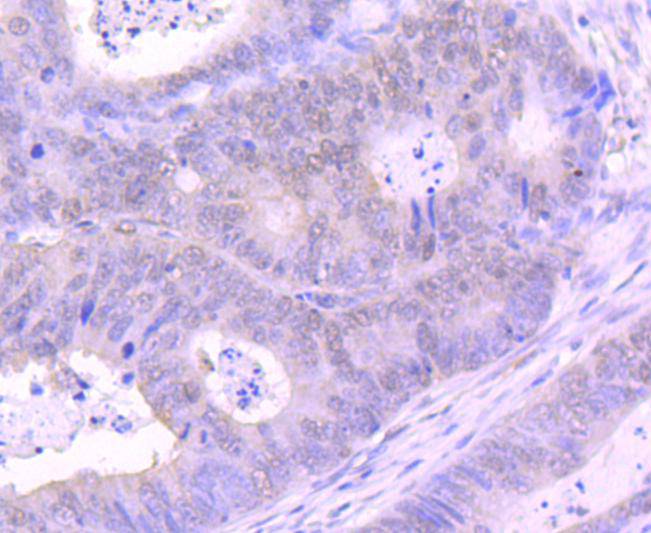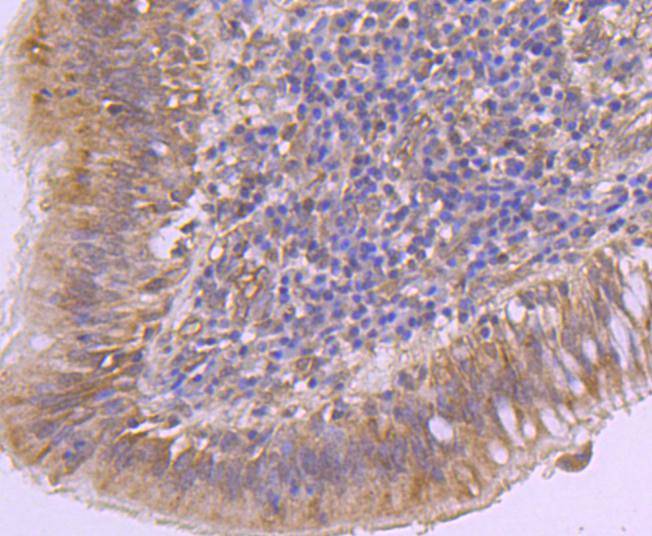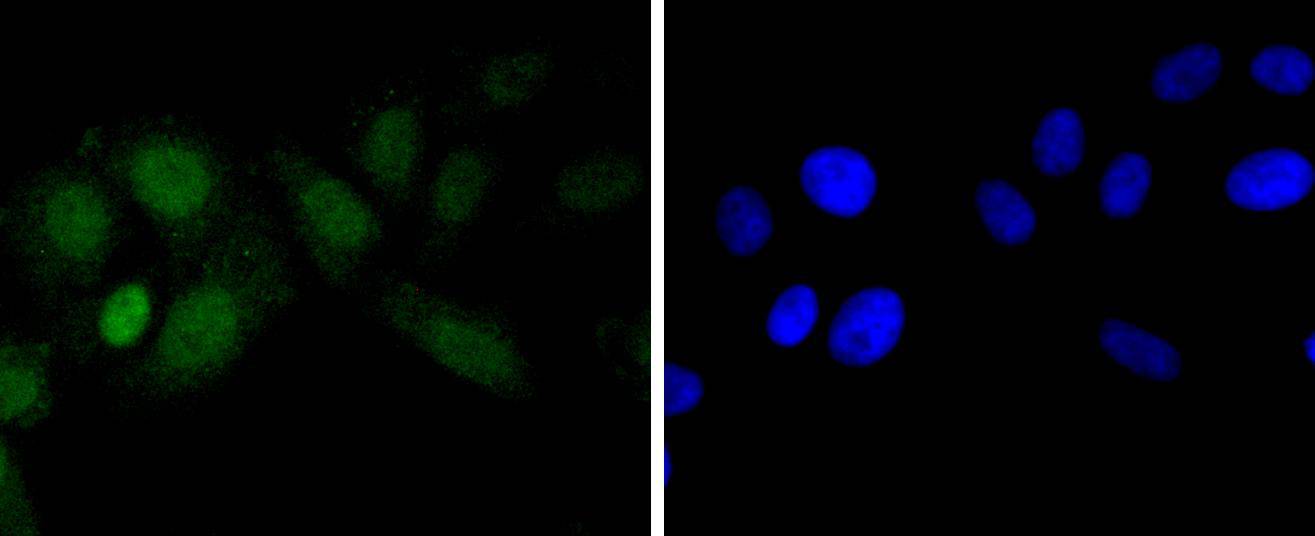Product Detail
Product NameKMT6/EZH2 Rabbit mAb
Clone No.JJ089-9
Host SpeciesRecombinant Rabbit
Clonality Monoclonal
PurificationProA affinity purified
ApplicationsWB, ICC/IF, IHC
Species ReactivityHu
Immunogen Descrecombinant protein
ConjugateUnconjugated
Other NamesEnhancer of zeste 2 antibody enhancer of zeste 2 polycomb repressive complex 2 subunit antibody Enhancer of zeste homolog 2 (Drosophila) antibody Enhancer of zeste homolog 2 antibody Enhancer of zeste, Drosophila, homolog 2 antibody ENX 1 antibody Enx 1h antibody ENX-1 antibody ENX1 antibody Enx1h antibody EZH 2 antibody EZH1 antibody EZH2 antibody EZH2_HUMAN antibody EZH2b antibody Histone-lysine N-methyltransferase EZH2 antibody KMT 6 antibody KMT6 antibody KMT6A antibody Lysine N-methyltransferase 6 antibody MGC9169 antibody WVS antibody WVS2 antibody
Accession NoSwiss-Prot#:Q15910
Uniprot
Q15910
Gene ID
2146;
Calculated MW86 kDa
Formulation1*TBS (pH7.4), 1%BSA, 40%Glycerol. Preservative: 0.05% Sodium Azide.
StorageStore at -20˚C
Application Details
WB: 1:1,000-1:2,000
IHC: 1:50-1:200
ICC: 1:50-1:200
Western blot analysis of KMT6/EZH2 on different lysates using anti-KMT6/EZH2 antibody at 1/1,000 dilution. Positive control: Lane 1: 293T Lane 2: 293
Immunohistochemical analysis of paraffin-embedded human colon cancer tissue using anti-KMT6/EZH2 antibody. Counter stained with hematoxylin.
Immunohistochemical analysis of paraffin-embedded human lung cancer tissue using anti-KMT6/EZH2 antibody. Counter stained with hematoxylin.
Immunohistochemical analysis of paraffin-embedded human breast carcinoma tissue using anti-KMT6/EZH2 antibody. Counter stained with hematoxylin.
ICC staining KMT6/EZH2 in Hela cells (green). The nuclear counter stain is DAPI (blue). Cells were fixed in paraformaldehyde, permeabilised with 0.25% Triton X100/PBS.
ICC staining KMT6/EZH2 in MCF-7 cells (green). The nuclear counter stain is DAPI (blue). Cells were fixed in paraformaldehyde, permeabilised with 0.25% Triton X100/PBS.
ICC staining KMT6/EZH2 in HepG2 cells (green). The nuclear counter stain is DAPI (blue). Cells were fixed in paraformaldehyde, permeabilised with 0.25% Triton X100/PBS.
In Drosophila, the Polycomb (PcG) gene family encodes chromatin proteins that are required for the repression of homeotic loci in embryonic development. PcG proteins work in conjunction with the trithorax-group (trxG), which activate homeobox gene expression during embryonic development. ENX-1, a mammalian homolog of the Drosophila gene enhancer of zeste, is a PcG protein that is ubiquitously expressed during early embryogenesis and becomes restricted to the central and peripheral nervous systems and sites of fetal hematopoiesis during later development. In the adult, ENX-1 is restricted to specific sites, including spleen, testis and placenta. The gene encoding human ENX-1 transcribes a 746 amino acid polypeptide which contains a trithorax-like domain and a DNA-binding motif. ENX-1 interacts with the proto-oncogene product Vav and is thought to be involved in the proliferation of normal and malignant hematopoietic cells. By altering the regulation of target genes, ENX-1 may also contribute to certain phenotypes of Down syndrome.
If you have published an article using product 49267, please notify us so that we can cite your literature.









 Yes
Yes



